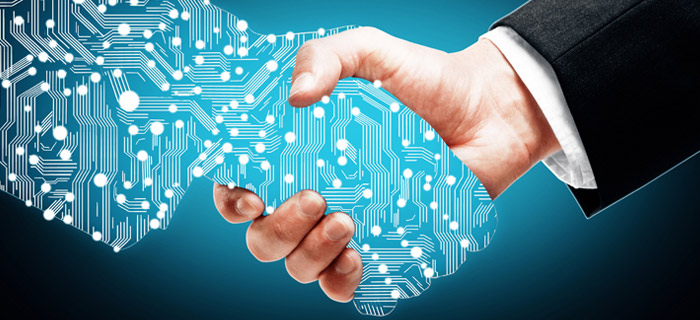Five real use cases of chatbots in customer service
August 28, 2023
Table of contents
Quick Access
It is usual today for consumers to visit a website and immediately see a chat box where they may clear up any questions or request assistance in completing a transaction. This is referred to as a chatbot.
According to the IBM portal, "a chatbot is a computer program that uses artificial intelligence (AI) and natural language processing (NLP) to understand customer questions and automate responses, simulating a human conversation."
Types of chatbots
Like most technologies, chatbots are divided into several types depending on their use and the needs of the project where they are used. These are:
- Rule-Based Chatbots — These chatbots are programmed to respond to specific user input using predefined rules and patterns. They are capable of responding to simple queries and providing information depending on a restricted number of options.
- AI-powered chatbots: These chatbots assess and comprehend user intent and context using machine learning and Natural Language Processing (NLP) techniques. They have the ability to learn and adapt to human behavior, allowing them to give more personalized and accurate responses.
- Hybrid Chatbots: Hybrid chatbots utilize a combination of rule-based and AI-based methodologies to give consumers with efficient and customized responses. They can also be programmed to handle sophisticated inquiries and tasks.
- Virtual Assistants - Virtual assistants are sophisticated chatbots designed to do tasks and communicate with consumers in a human-like manner. They are capable of doing many jobs while also integrating with other software and systems.
- Transactional Chatbots: Transactional chatbots are designed to carry out certain tasks, such as booking reservations or making online purchases. They can employ AI and NLP to assist users in completing the transaction as smoothly as possible.
- Social Media Bots - Social media bots are chatbots that engage with people and automate various social media duties such as posting material and responding to messages.
- Voice Bots: Voice bots are chatbots that engage with people by using voice requests and responses. They are compatible with smart speakers, mobile phones, and other voice-enabled devices.

5 practical applications for chatbots
Beyond technical applications and incorporation into web pages or software products, chatbots serve five primary non-technical functions in real life, all of which are centered on meeting the primary demands of users.
Customer care 7 days a week, 24 hours a day
Chatbots can provide customer service 24 hours a day, seven days a week, answering simple questions and providing basic information. This can help to increase customer satisfaction while also reducing the workload on support workers.
Order monitoring
Chatbots can assist clients in keeping track of their orders and providing real-time delivery status updates. This can help to improve the client experience and reduce the frequency of order status enquiries.
Product Suggestions
Chatbots can assist customers in finding the right products by asking questions and making customized recommendations based on their interests.

Making appointments
Chatbots can help organizations book and manage appointments, lowering the stress on customer care personnel and increasing the customer experience.
Resolving Complaints
Chatbots can be built to manage client complaints and offer solutions, as well as escalate the issue to the relevant team member. This can aid in the speedy and effective resolution of complaints, hence increasing customer satisfaction.

What does the future of chatbots hold?
Chatbots, according to industry analysts, will grow more intelligent, human-like, and omnipresent in the future. They are intended to change the way businesses connect with their customers and increase customer engagement.
The New York Times quoted Sam Altman, the director of OpenAI, as saying, "My goal is to construct A.G.I. I appreciate that this is ludicrous." He is referring to the fact that researchers want to one day create what is known as artificial general intelligence, or A.G.I. - a machine that can do anything the human brain can do.
More sophisticated personalization, in which chatbots become more personalized and better understand users' requirements, preferences, and behavior, is one of the next breakthroughs in chatbots. Chatbots will also be able to converse via other messaging channels, such as social media and voice assistants.
This type of tool will require integration with other technologies. To boost accuracy and performance, chatbots will include AI technology such as machine learning and neural networks. Furthermore, they will improve their ability to read human language and discern intentions.
In conclusion, the future of chatbots appears bright, and we may anticipate them becoming an indispensable component of daily life.
We recommend you on video
Related Blogs
Free Magento Commerce Features for an Online Store

How to use chatbots for e-commerce?

Which API is best for Android App Development Services

How to automate processes with Odoo software
What programming language is used with React Native?
